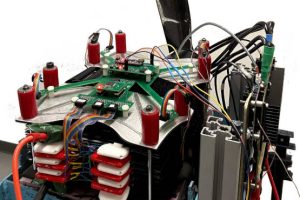
Inspiration came from biological redox reactions that happen inside living beings, and for an energy source the team picked bio-materials with the highest and lowest redox reduction potentials: riboflavin for the anode and quercetin for the cathode.
Riboflavin is vitamin B2, found for example in almonds, and quercetin is a food supplement and ingredient, present in capers, said IIT.
Activated charcoal (over-the-counter medication) was mixed into the electrode materials to increase electrical conductivity, and the electrolyte was a solution of the edible salt sodium hydrogen sulphate in water.
Nori seaweed (sushi) formed the separator, and the whole thing was encapsulated in beeswax, except for two protruding gold foil contacts (food-grade, used by pastry chefs) on a cellulose derived support to bring out the power.
Open circuit output is 650mV, and it can provide 48μA for 12 minutes, or a few microamps for more than an hour, said the university. Tens of charge-recharge cycles were demonstrated.
“Future potential uses range from edible circuits and sensors that can monitor health conditions to the powering of sensors for monitoring food storage conditions,” said research coordinator Mario Caironi. “Moreover, given the level of safety of these batteries, they could be used in children toys, where there is a high risk of ingestion. We are already developing devices with greater capacity and reducing the overall size. These developments will be tested in future also for powering edible soft robots.”
For a full description, turn to the freely-available and easily-readable Advanced Materials paper ‘An edible rechargeable battery’, which also describes using indigo carmine and ellagic acid as a second pair of electrode materials.
 Electronics Weekly Electronics Design & Components Tech News
Electronics Weekly Electronics Design & Components Tech News



